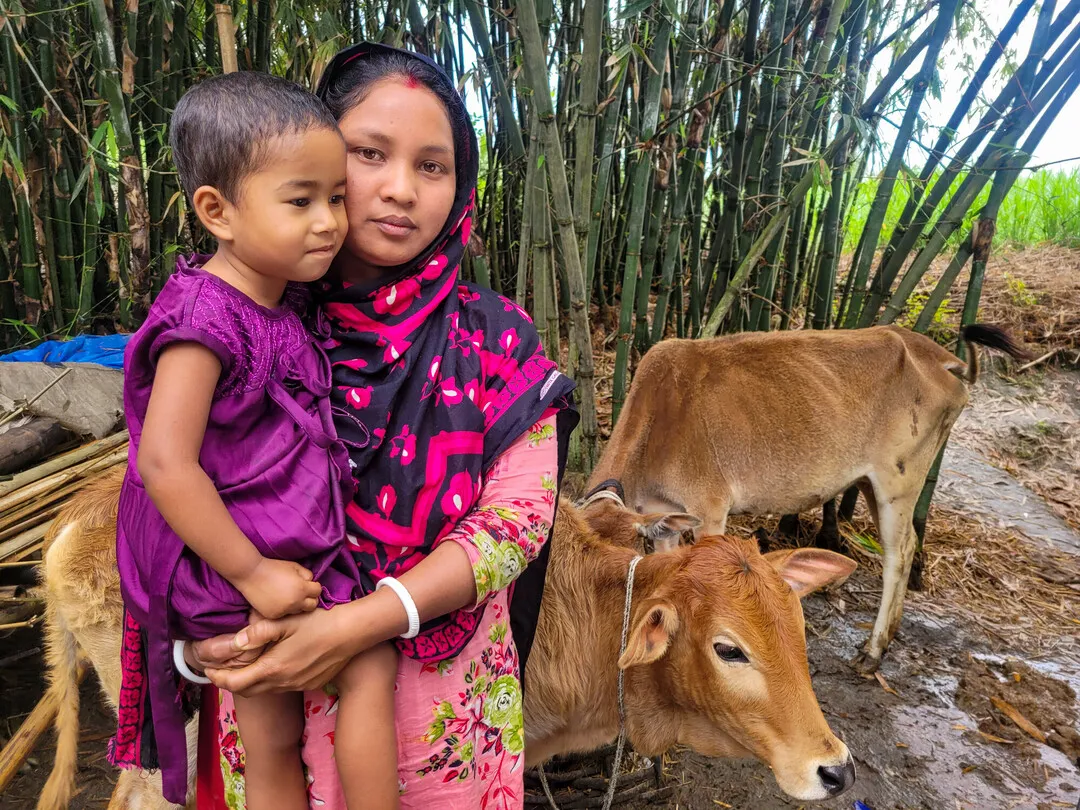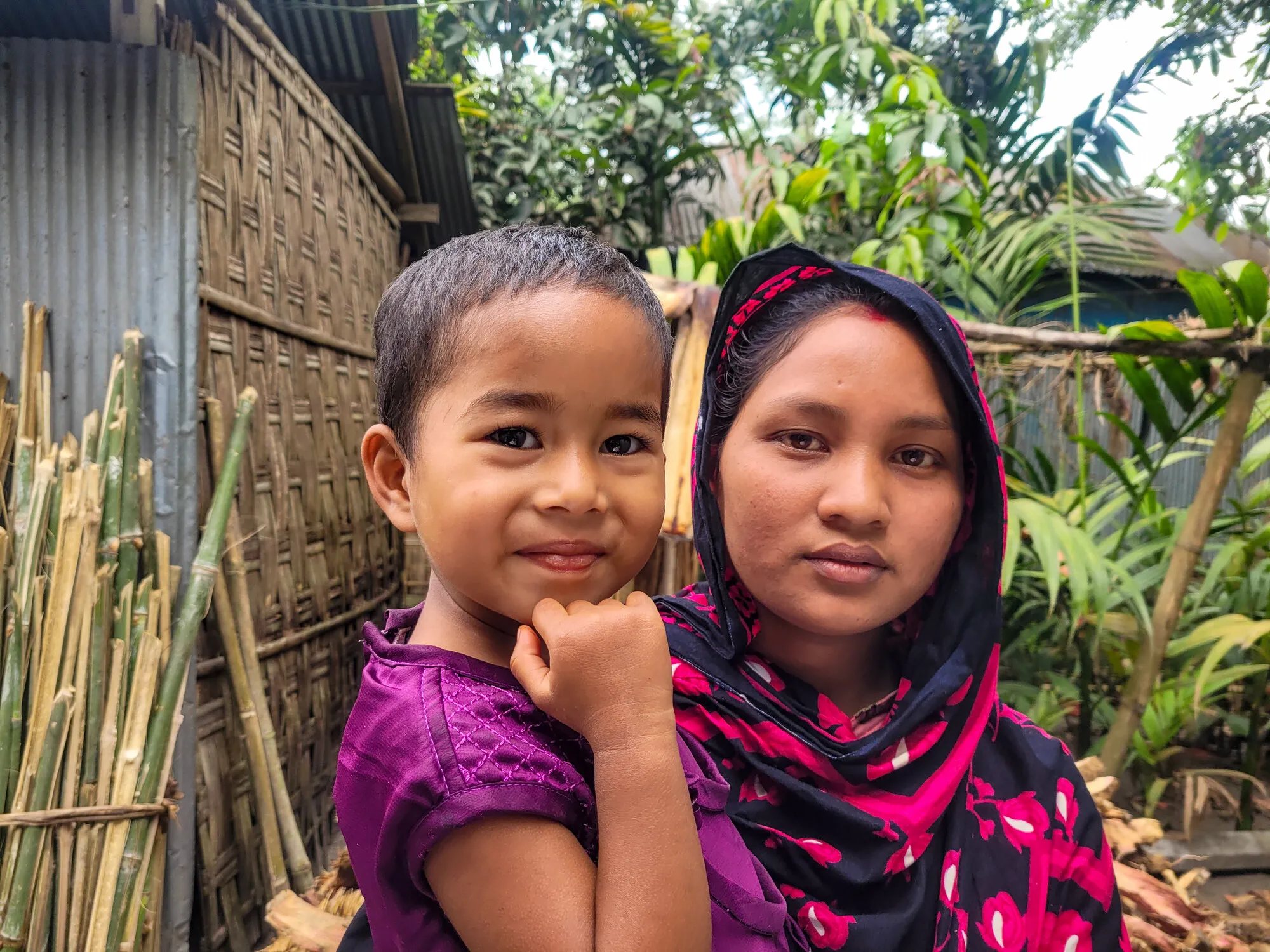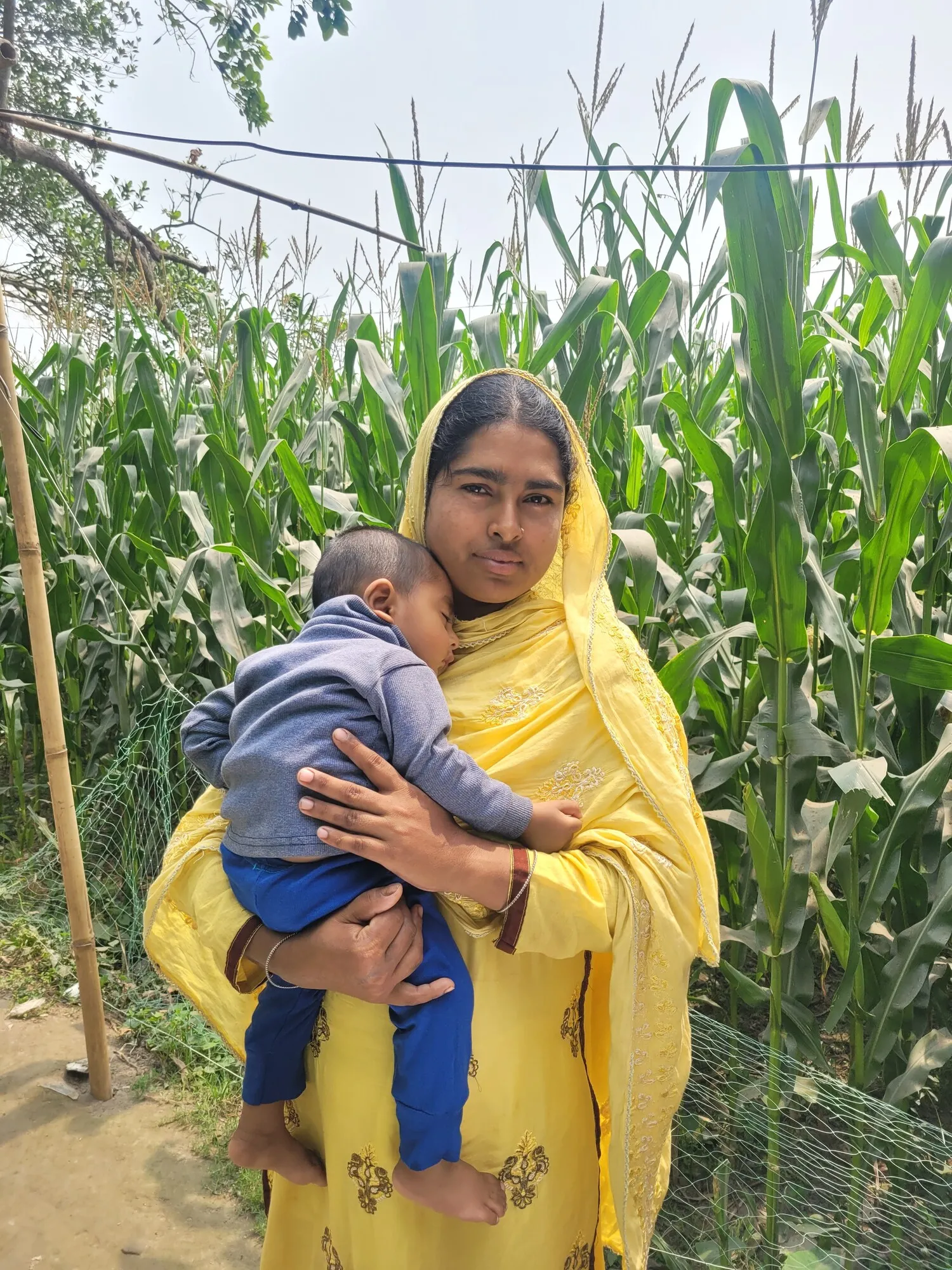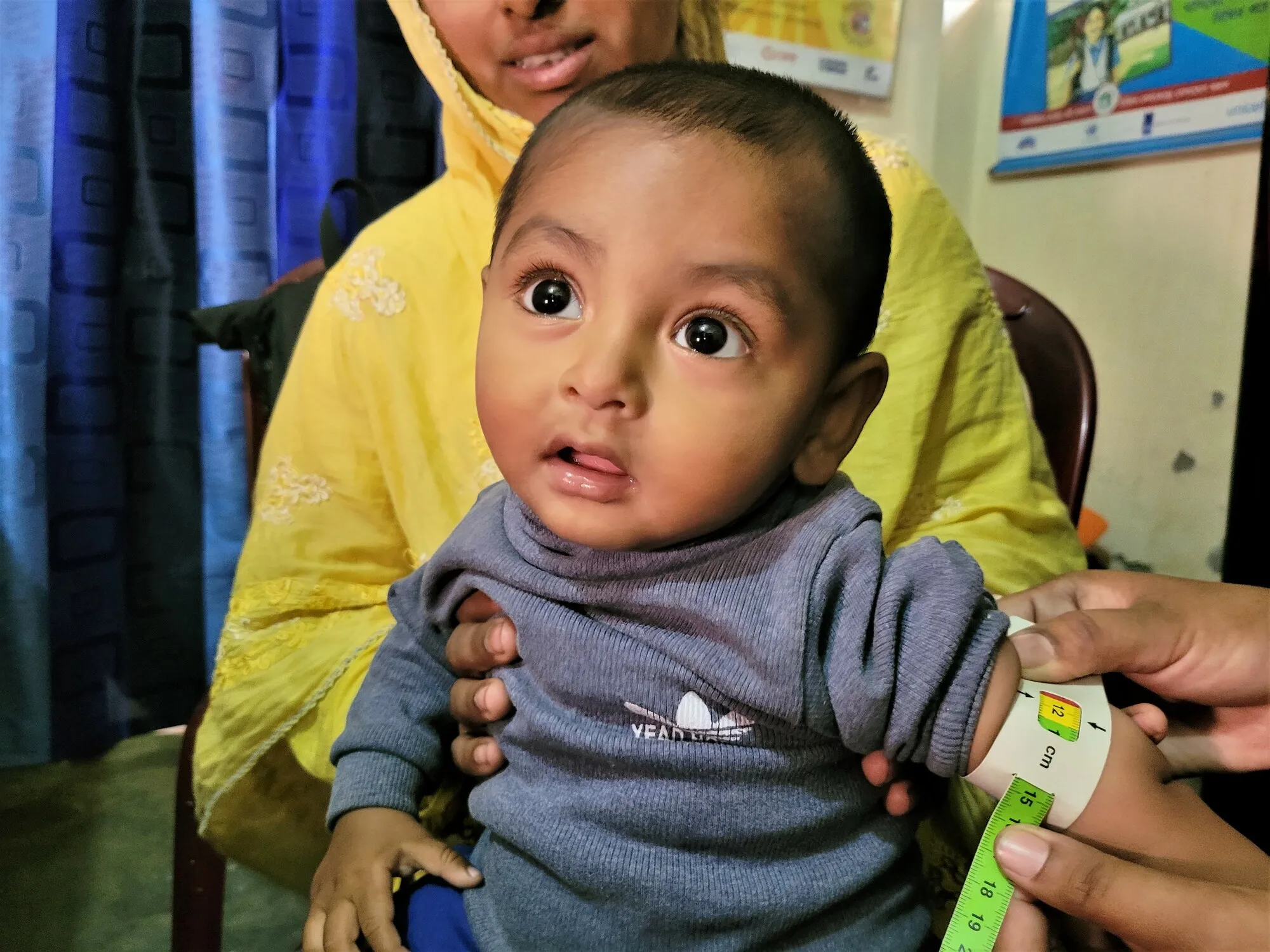“We… didn’t know how important it is to breastfeed the newborn with colostrum within the first hour,” says Asma Akter, 30, mother of Araf, seven months.
Colostrum, the first form of breastmilk, is nutrient-dense and high in antibodies and antioxidants to build a newborn baby’s immune system. It changes to breast milk within two to four days after the baby is born. Colostrum is thicker and more yellow than traditional breast milk.
In this small village, surrounded by rice fields and populated with many cows and goats, access to information about maternal and infant care was limited.
“I didn’t know about health check-ups for pregnant women,” says Priyanka, 25, mother of Pollobi, 2. “Many women died during their pregnancy or while giving birth. This was normal and a risk we all took. The women gave birth at their homes, now most of us go to the community clinic.”
Progress, but not enough of it
According to a study by the World Health Organization, Bangladesh has made progress in bringing down maternal mortality, from 441 deaths per 100,000 live births in 2000 to 123 deaths in 2020 — a rate that is still very high. The Sustainable Development Goal Target 3.1 stipulates reducing the maternal mortality rate to less than 70 deaths per 100,000 live births by 2030.
Most of the complications from which women die are preventable.
Access to maternal care and skilled birth attendants is believed to be of utmost importance in reducing maternal mortality — yet almost half of all births in Bangladesh still take place at home without the help of skilled birth attendants. The WHO study shows that only 30 percent of mothers who have had no previous education in comparison to 63 percent of mothers with secondary education had access to a skilled birth attendant. In addition, depending on how poor a woman is, the less likely she will have a skilled health professional at her side when she is giving birth. Only 32 percent of the poorest mothers in comparison to 86 percent of the richest have access to skilled delivery support.




